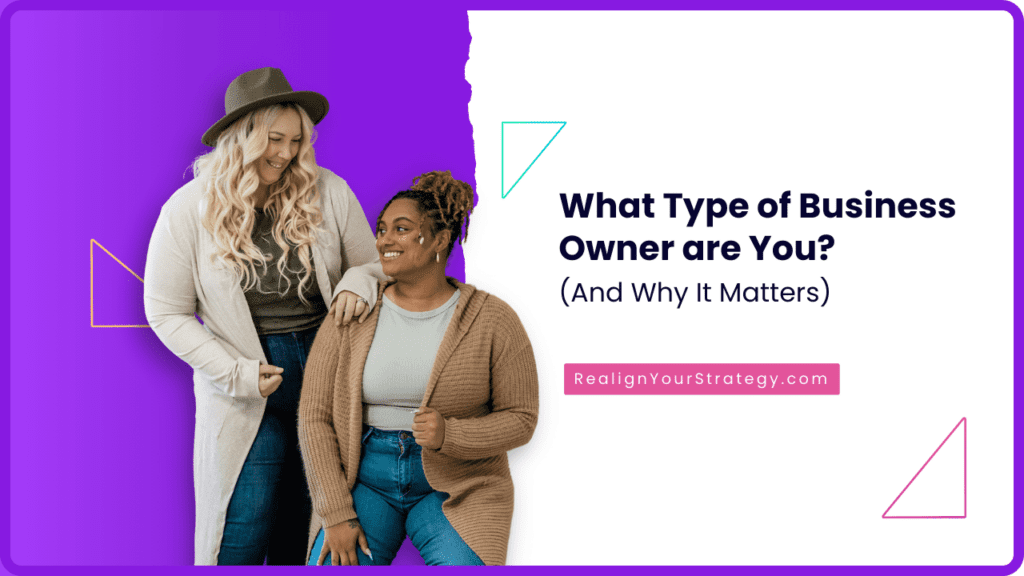Grow your business with sustainability and joy by understanding your innate leadership style.
Have you ever used a popular business tool or strategy only to discover it wasn’t a good fit for the type of business owner you are?
- Maybe you thrive on close connections with your audience but feel pressured to build a team to handle communications.
- Maybe you lead an established business, but you’re being encouraged to learn an entirely new way of marketing to keep up with current trends.
- Or maybe you are filled with new ideas to expand your brand, but you feel trapped into focusing on one project while those other opportunities pass you by.
Sometimes business advice can make you question if anyone understands what you’re trying to do as a local founder.
In my experience, it’s not you. It’s them.
(If “them” is business support that claims to be the Holy Grail of solutions for success.)
But while business tools can be pretty generic, founders are anything but.

For sustainable success, founders need support that works with their unique approach to entrepreneurship, generating leads and sales, and doing the work.
I’ve spent over a decade supporting all types of business owners.
And their paths toward sustainable growth, ease, and fun for their businesses are all unique.
Why?
Because not all owners approach their businesses in the same way.
How each one generates business, chooses what to prioritize, and interacts with clients determines their distinct ownership style.
What works for one type of business owner doesn’t work for another. At least not sustainably.
In my experience, local founders tend to fall into five categories based on their ownership styles. I call these categories the Business Owner Archetypes.

The Fully-Booked Cover Band

The Indie Artist

The Jukebox Hero

The Crossover Sensation

The Solo Act
Understanding which type of business owner you are helps you pinpoint the support that best fits your needs. (And confidently put aside the rest).
All types of business owners have innate strengths and challenges.
And each has what it takes to be highly successful.
Keep reading to learn more.
What is the value of understanding the 5 types of business owners?
Let’s look at how we’ve worked with two of our long-term clients.
These two local founders have a lot in common. Such as…
Both clients are in the trades industry.
They operate within the same geographic area.
They work in the homes of the same types of customers.
They were both founded during The Great Recession with nothing but the founder’s own labor and a small five-figure personal loan to get the company moving.
At first glance, it might look like they would benefit from the same business strategy.
But when we look at the driving factors of the individual owners, we can see that the same approach will not work for both over the long term.
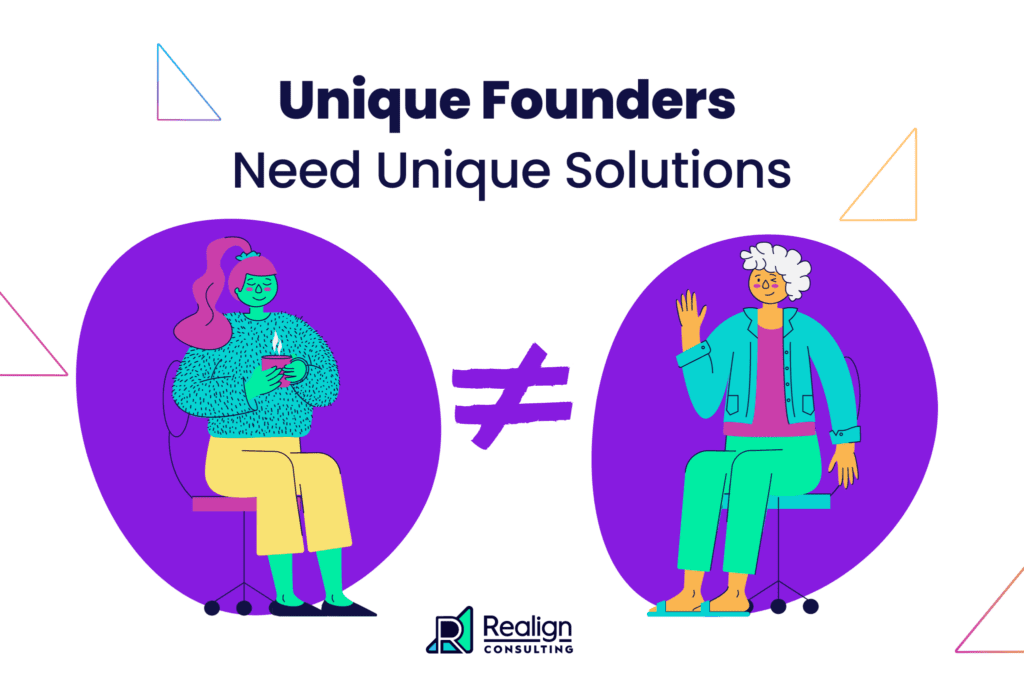
One owner fits the Fully-Booked Cover Band archetype. When we met, growth was happening. But there were no systems in place to sustain that growth in a healthy way, so the company kept sliding backward every time they got too busy. The founder and his leadership team were working themselves to exhaustion.
This Fully-Booked Cover Band needed predictability. More specifically, their leader needed automated systems and processes that he did not have to think about. He could then have more time to enjoy the life he had built.
This owner is motivated by…
- Sustainable profit that will take care of him and his team,
- Being a premier company for his industry in his area, a leader among peers and in his community,
- Cyclical systems that do not need constant oversight from him,
- Low-risk, incremental growth driven by proven strategies with predictable results (no surprises!), and
- Having free time to spend as he chooses, knowing the business will keep operating like a well-oiled machine.
One way we honor this founder’s ownership style is in how we use the Trinity Principle™.
The Trinity Principle™ states that you only need three platforms—executed well—to get all the leads and sales your business needs to prosper.
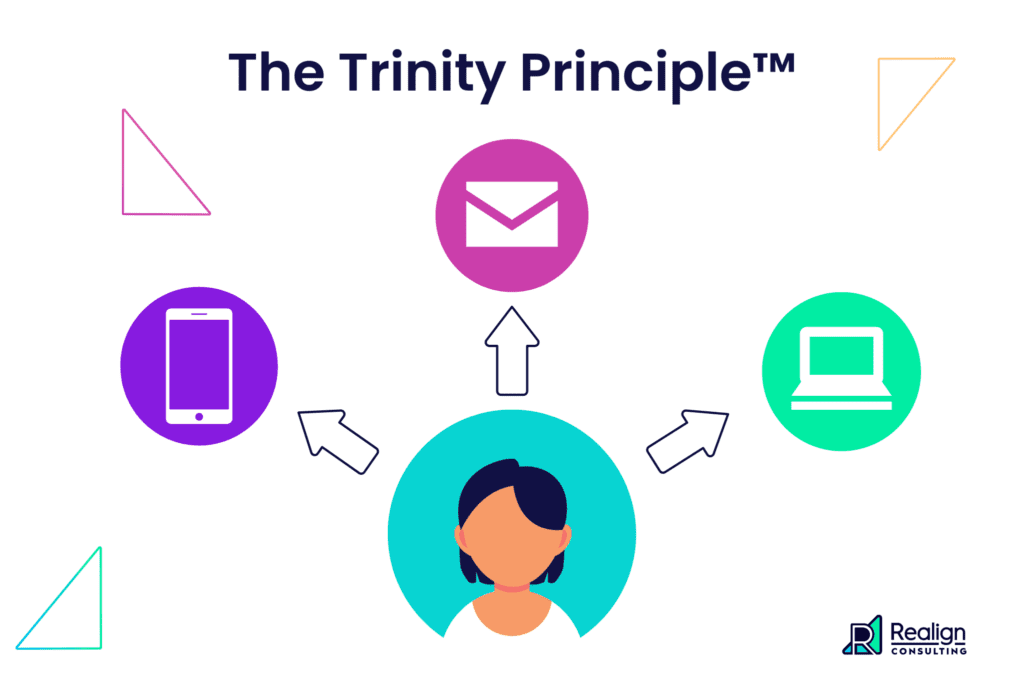
For this particular company, we decided to focus on PPC ads, an email newsletter, and SEO.
Most importantly, the management of these platforms could be outsourced and automated. Marketing is not where this founder is excited to engage. By taking it off his shoulders, he has more energy to spend on what he enjoys.
Despite their outward similarities, this same strategy of predictability would not work well in the long run for the second client, a Crossover Sensation.
The Crossover Sensation archetype needs novelty and to stay engaged in her business. (In this way, they are the opposite of the Fully-Booked Cover Band.)
This client has expressed her creativity by experimenting with different ways of engaging her audience, collaborating with others, and managing the business. Although she kept her product the same, she pursued new directions in other areas of the business.
This type of owner also wants to make sure she and her team are well taken care of by the company.
But surrounding her with predictable processes would limit her creative energies in ways that are not sustainable.
The Trinity Principle™ also works for the Crossover Sensation, though the implementation looks a little different.
This natural idea generator needs a framework to operate within. This way, she can experiment and play while supporting the business’s ongoing success.
For this particular company, the chosen platforms are the website, social media, and the fleet of company cars.
The owner has played with various ideas, including,
- Posting videos and before & after photos on social media,
- Creating QR codes for use at local events, and
- Adding industry-specific decorations to the top of the company vehicles.
This Crossover Sensation is excited about being involved in the marketing aspect of her business.
With the right framework, she can honor her creative side and drive for novelty while knowing her efforts will not sabotage what she has worked so hard to build.
The most successful business strategy is the one that the owner can adhere to consistently over time.
Knowing a founder’s archetype helps to identify the motivating force behind why they do what they do. When an owner’s passion informs the strategy, they are more likely to stick with it and thrive.
Keep reading to learn more about the five types of business owners and how each one can learn to grow with sustainability and joy.
The Fully-Booked Cover Band
Capitalizing on Rapid Business Growth to Fuel Sustainable Success
The leader of a Fully-Booked Cover Band has developed a team to handle client calls and complete customer projects. She has a website, but she doesn’t really know how it is helping to bring in customers. Business is going great just from referrals.
But her company still needs her personal oversight to keep things running smoothly. She feels close to burnout and wants to take steps toward running the business rather than having the business run her.
And it would be nice to take a vacation once in a while!

Does the Fully-Booked Cover Band sound like you?
Take the full Owner Archetype Quiz to find out.
Local founders who identify as leaders of a Fully-Booked Cover Band are facing a business boom. But without suitable structures in place, this success can come at the expense of their mental and physical health.
Many people assume that rapid growth solves everything for a local company.
But I have found over the years that rapid growth is one of the most common precursors to business failure.
Why?
Because it often results in owner burnout.
To make this success sustainable, this type of owner must understand the systems they need to support their leadership style.
When you’re as popular as a Fully-Booked Cover Band, it can feel like you’re on top of the world. It seems like everyone wants what you have.
You’re surrounded by a supportive team that wants to help you succeed.
Your sales are strong, maybe overwhelmingly so.
Your community views your company as successful and trustworthy.
But all this success comes at a cost. Keeping up with high demand without supporting structures can sap your energy and joy.
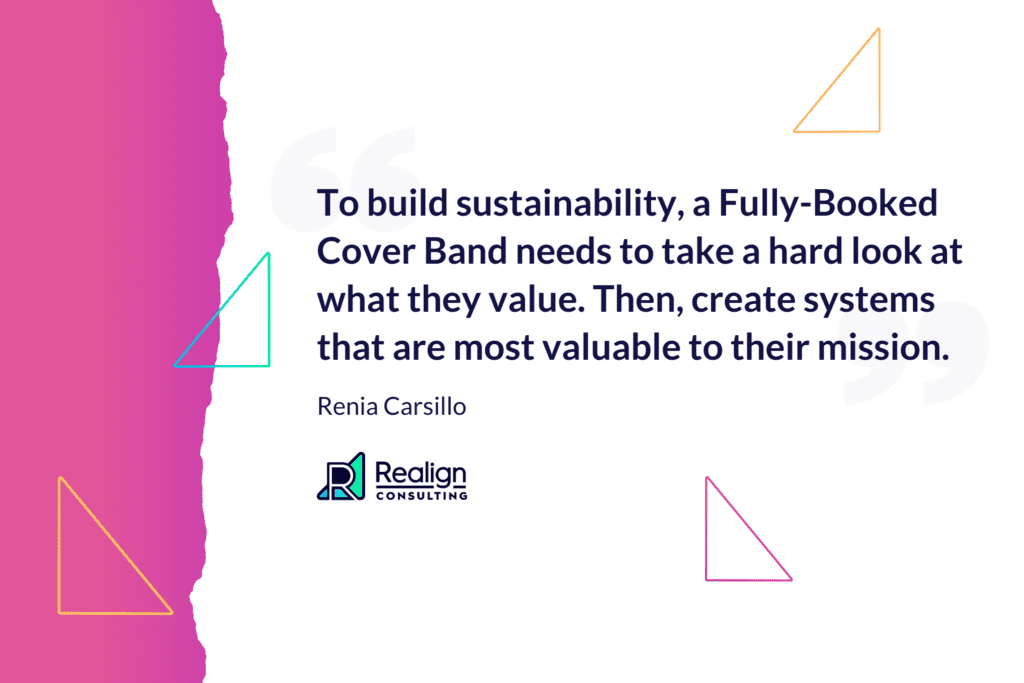
"To build sustainability, a Fully-Booked Cover Band needs to take a hard look at what they value. Then, create systems that are most valuable to their mission."
Renia Carsillo Tweet
The Fully-Booked Cover Band and her team are like world-renowned musicians performing in 85 cities in 90 days.
Sure, everyone knows the name of Janis Joplin and Elvis Presley. But they fueled their success with unhealthy habits and supplemental drugs, which led to tragedy.
Being a crowd-puller is supposed to feel better than this.
And it can, with the right strategy.
For the Fully-Booked Cover Band archetype to regain her freedom, she must set boundaries for and within her company.
This type of founder faces two challenges:
- Internal systems that need to catch up to sales growth.
- Overcommitment that is stretching the owner and her team too thin.
With the right tools, she can streamline her business systems to make more money while she works less and focuses on what she loves.
This owner archetype must develop systems to create order out of chaos and grow sustainably.

Many types of business owners know what it’s like to be in this position at one time or another, especially if you’ve been in business for a long time.
It feels like everything is going really well — until suddenly, it’s not. And you find yourself burned out, anxious, and exhausted.
I reached this point in 2021.
We had massively scaled our team and client base and were pretty excited. It seemed like everything was going in the right direction.
But our systems, technologies, and team development were not in a place to sustain that kind of growth. At least not without sacrificing our values or my energy and time.
By the beginning of 2022, we had to make significant pivots to avoid compromising in unhealthy ways. (And the adjustment period is taking longer than if we’d grown at a steady pace.)
We were generating business like a Fully-Booked Cover Band. So we felt the need to take advantage of every opportunity available to us.
We had to remind ourselves that it was okay to take a break.
So if you need that reminder, here it is:
It’s okay to rest.
Otherwise, your business success will come at the cost of your energy, values, employees, family, or community.

To build sustainability, a Fully-Booked Cover Band needs to take a hard look at what they value. Then, create systems that are most valuable to their mission.
No business goes through massive growth forever, which is why talk about business lifecycles is so prevalent. Unlike incremental growth, which can continue indefinitely, massive growth is unsustainable.
Why?
Because of a lack of systems and foundations. Without them, this kind of growth leads to the sacrifice of your people, your margins, or your values.
For the Fully-Booked Cover Band to regain her freedom, she needs logistical support to let go of the “doing” and reprioritize the role only she can do — lead.
A key question for this type of owner is this:
What can’t get done without you?
That’s the first place to begin developing a system, automation, or training someone else.
Begin with taking inventory of your internal production systems. What assets are you missing?
Do you need…
- A physical office space?
- A tool for scheduling jobs?
- A project management system?
- An HR tool?
- A CRM (customer-relationship management) automation?
Once you decide on a thread to pull, you can start untangling the knot of your business systems to create something beautiful and lasting.

The right internal systems don’t just give you room to breathe. They also secure a path to sustainable growth.
People want what you have — right now.
This means that right now is the time to systemize and automate what’s working with your marketing and sales. Bolstering these processes will help smooth the way for new customers so your growth can continue.
Besides needing supportive internal systems, this owner archetype also needs boundaries around where to commit her resources.
Rapid growth can be exciting. What a wonderful position to be in — to be able to point at your company and say, “See, I knew it would work!”
But in the fever of activity, the Fully-Booked Cover Band owner can find it hard to know when to say “no” — or at least “not yet.”
To help determine the best places to spend your energy and money, refocus on your central mission as a company.
That will help you determine where you perfect your systems and invest your money.
Create sustainability from the inside out. Then, it will become easier to incorporate new opportunities in a way that contributes to your growth.
If you can systematize what’s working when you’re thriving, you will avoid many of the most painful pitfalls when the cycle inevitably changes.
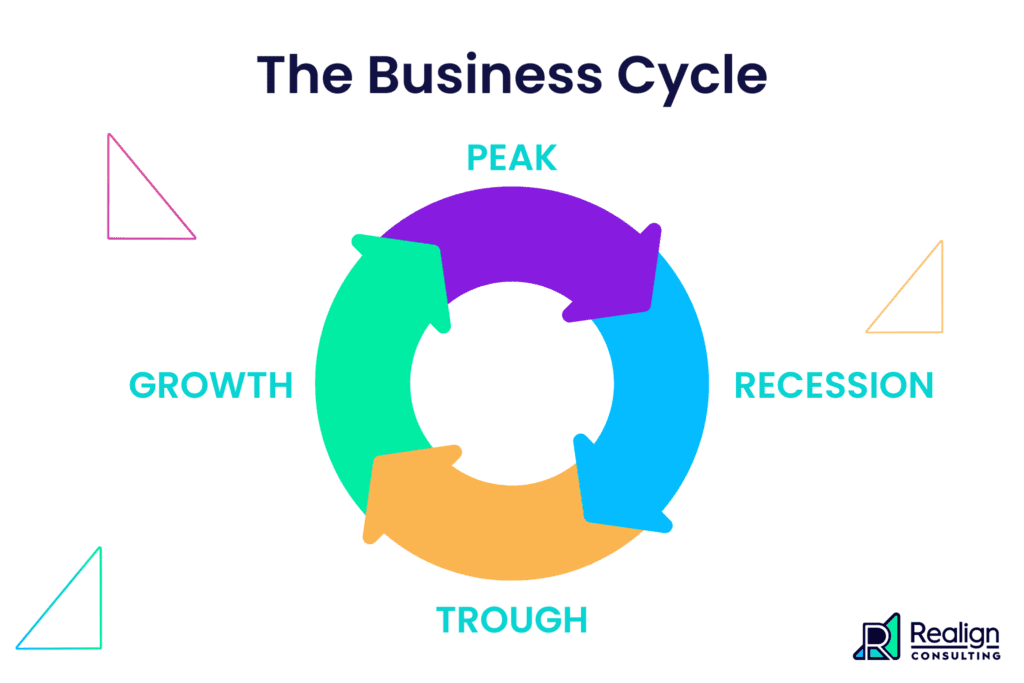
The Fully-Booked Cover Band owner archetype is in a unique place of opportunity compared to other types of business owners.
With the right internal systems, she can take control of her growth and create a sustainable impact.
Next, let’s focus on the Indie Artist. She may or may not want to scale like a Full-Booked Cover Band eventually. But this type of business owner often finds her growth constricted by her own physical limitations.
The Indie Artist
Finding Sustainable Growth When Your Business Centers Around You
The local founder who identifies as the Indie Artist archetype wants to take her one-person business to the next level.
She may already be working with a stable team of contractors, but she is looking to grow the business to be more than about her.
This type of business owner often has a presence in the digital space, with a website that clients can use to contact her or her team. She attracts new clients through referrals and word-of-mouth and sometimes through social media.
Does the Indie Artist sound familiar?
Take the full Owner Archetype Quiz to discover your founder style.

The Indie Artist is inspired by the deep trust she’s developed with her core audience and sees the potential to expand her impact. But at the end of the day, she is limited by what she can accomplish on her own.
When the responsibility of keeping your company running falls on you — and only you — how do you find space to grow?
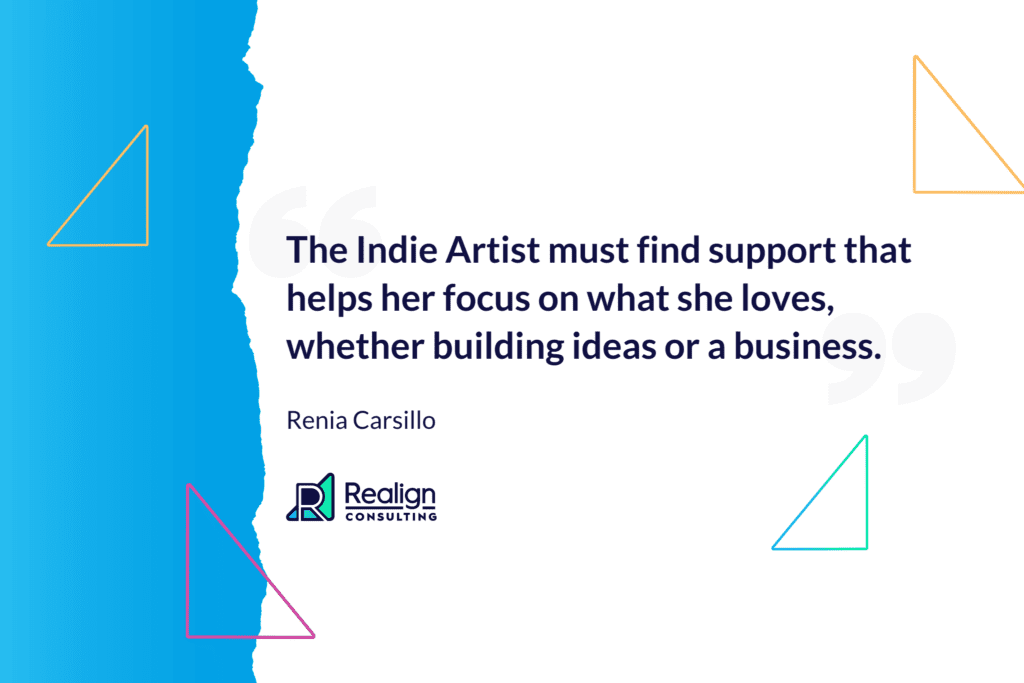
"The Indie Artist must find support that helps her focus on what she loves, whether building ideas or a business."
Renia Carsillo Tweet
There is a crossroads that every Indie Artist must face: What are you trying to build, really?
Peter Drucker once reportedly told Jim Collins that he needed to choose between being an ideas builder or a business builder. He couldn’t do both.
Collins chose to be an ideas builder. He is now one of the most famous business thought leaders in the U.S. today.
Then there are entrepreneurs like Sara Blakely, inventor of Spanx. She has built a million-dollar company known worldwide.
Once you understand your direction—business or ideas builder—you’re ready for the next step. It’s time to address the two challenges that often keep Indie Artists spinning their wheels: replication and support.
The Indie Artist must learn how to translate what makes her unique into something reproducible and then get support for the process.
How do you delegate a company’s responsibilities when what’s being sold is the owner’s knowledge and experience?
Since cloning oneself à la Multiplicity is off the table, that leaves only one option.
To thrive, an Indie Artist must dig deep into the methods and philosophies that attracted her audience in the first place.
For the business builder, this looks like…
- Systemizing the work you are doing to make it replicable.
- Building capacity in other people by training them in the work and how to move it forward.
Every business can benefit from the development of SOPs. But the business-building Indie Artist will find them to be especially vital.
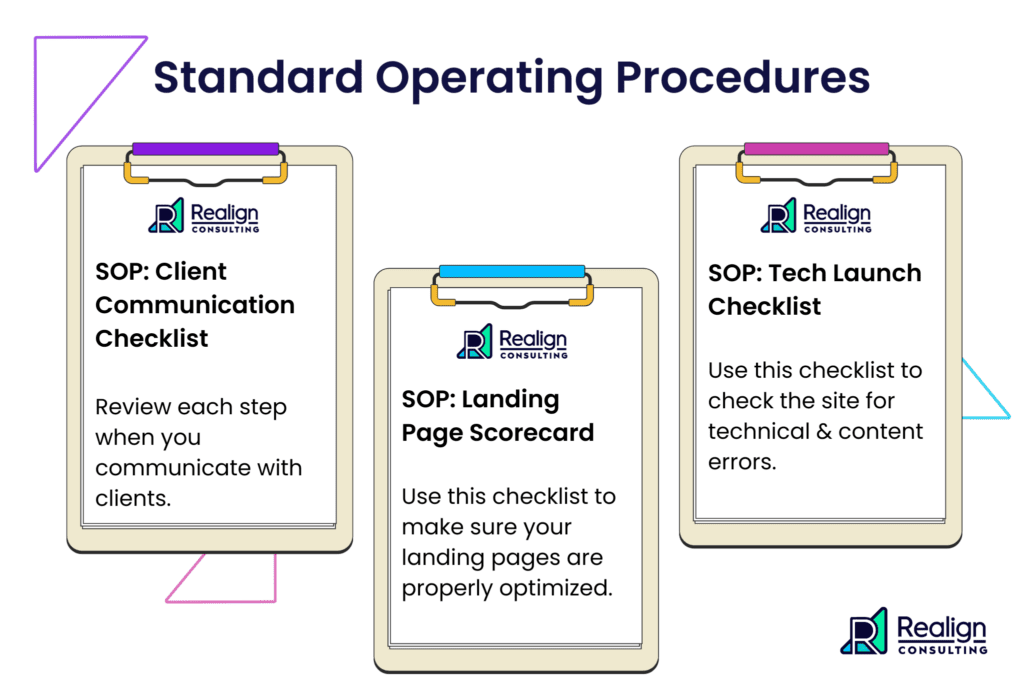
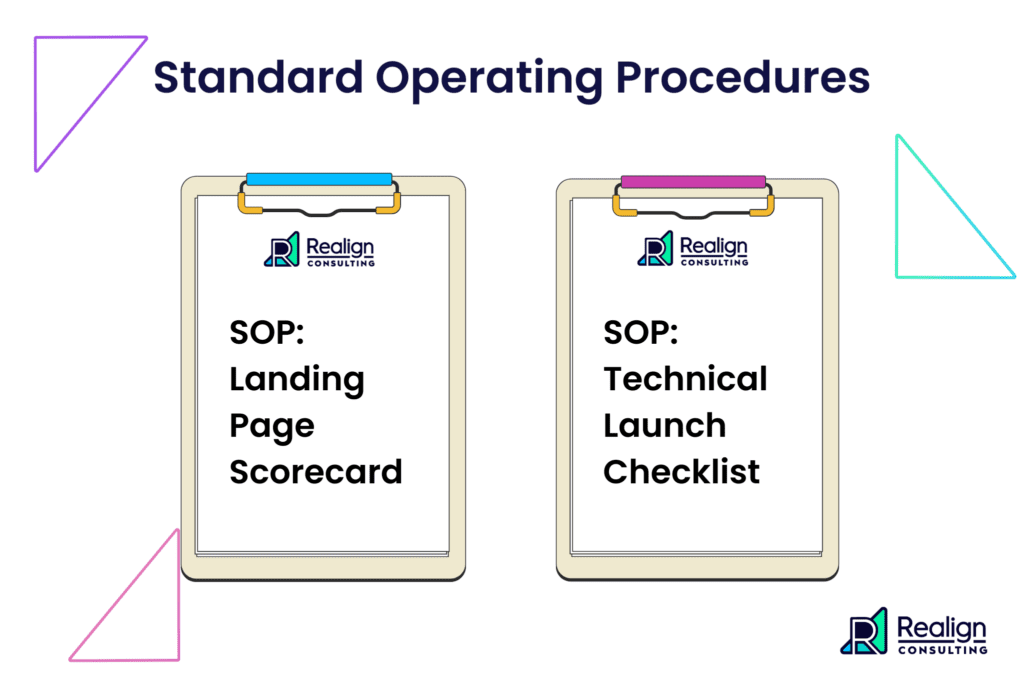
SOPs (standard operating procedures) allow others to be trained in and reproduce the systems that keep the company running. They also enable the business to scale while staying true to what brought it success in the first place.
More than other types of business owners, this archetype would benefit from not always hiring “the experts.”
After all, her unique approach is what first attracted her audience. So her team members should have a deep understanding of and dedication to that approach to maintain the company’s authenticity.
For the ideas builder, digging deeper looks like…
- Developing and documenting their ideas in detail.
- Creating a framework for getting those ideas out into the world.
She will most likely need to consider content development in some form. (Writing, speaking, podcasting, videos, etc.)
These platforms are easily sharable in today’s digital world. And they are also at least semi-permanent, allowing the founder’s ideas to reach new audiences months or even years after publication.
For sustainable success, this type of business owner needs the space to spend time with her ideas.
She must learn to frame her ideas in a way that is easily understood. Then, she needs to develop a framework for those ideas that others can easily apply and share.
Unfortunately, many idea builders get lost in team building and growth work that is a better fit for the business builder. Then they lose the space to truly cultivate their ideas.
Building the right kind of team for your goals takes work. But it can be done.
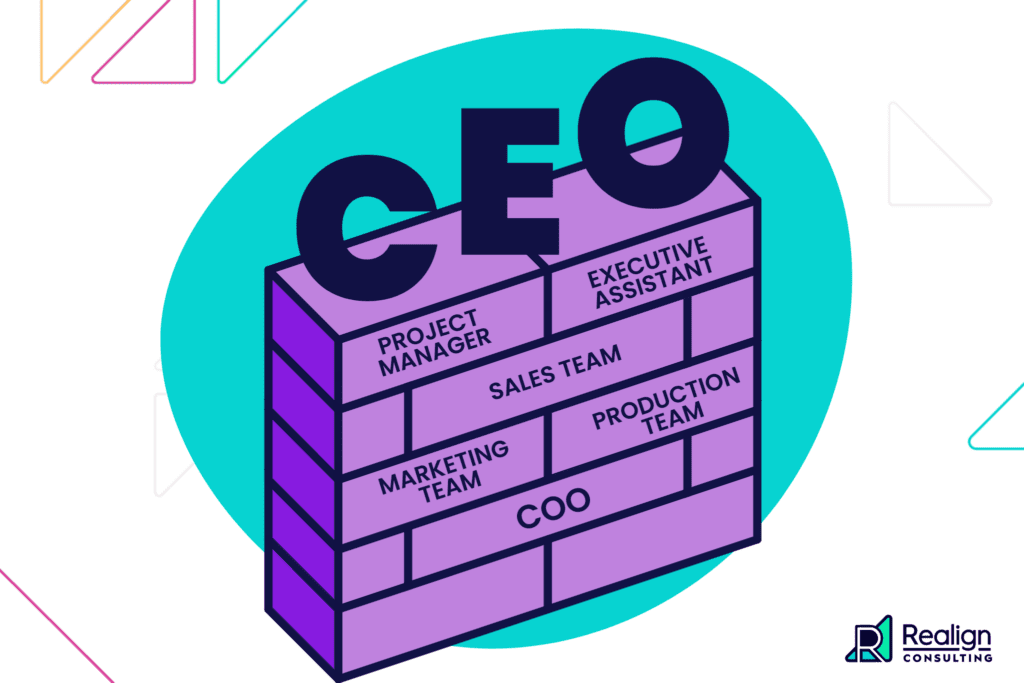
Of the five types of business owners, the Indie Artist is the one I relate to the most.
When I began my business, what attracted my clients was my unique coaching style and perspective on sustainable business practices.
At the time, the responsibility for the success or failure of my company rested squarely on my shoulders. This arrangement was fine for a while, but my goals have since shifted toward thought leadership. I realized I could not accomplish these goals if I remained a solopreneur focused on business building.
So, with a few stops, starts, and missteps, I’ve expanded my team to a few core people.
I’ve developed my team to take over in areas I previously handled myself. For example, I’m training one team member to write in my voice to share the message of Do Better Digital™. Another is learning to represent me in client meetings while holding to the Realign Consulting mission and values.
And I have to say, I’m pretty excited about where we are headed as a company.
In realizing my role as an Indie Artist, I have begun to rediscover space to focus on idea creation and development.
Because every little task is no longer on my shoulders, I can focus on moving our company forward and expanding our impact.
The Indie Artist must find support that helps her focus on what she loves, whether building ideas or a business.
This type of owner may have tried every coach, strategy, or tool she’s come across to find a path toward sustainable growth. But not every local founder approaches business in the same way, so it can be hard to find support that fits.
It’s important to remember that sustainability is about more than just delegating tasks.
It’s also about making room for the things about your business that satisfy you or bring you joy.

When you’re systematizing your awesome, be careful not to delegate away your passion.
What is your favorite way to serve clients?
Is there an aspect of marketing that you love?
Whatever it is that gets you going into the morning, prioritize it. A business is only sustainable when the owner loves what she does.
Despite his achievements, Jim Collins still maintains only a micro-team to handle administrative work. This frees him to focus on building out his ideas to make them easily consumable.
Meanwhile, Sara Blakey has hundreds of employees, who she credits with her company’s far-reaching success.
But they both found a way to be free to focus on what they love.
The Indie Artist's path to lasting success begins with understanding your passion.
Then, you must develop a framework that keeps you connected to that passion while providing structure for growth.
Next, let’s talk about the Solo Act. Unlike the Indie Artist, this type of business owner is content to continue as a one-person show. But she may be looking for tools to help her fully enjoy the single life and avoid burnout.
The Solo Act
Creating Systems to Support the Life You Want as a Solopreneur
Unlike the Indie Artist owner archetype, the Solo Act has no desire to grow her company beyond herself.
She loves having that direct contact with clients. You can often find her through social media, email, or direct contact at local events or speaking engagements.
She feels like repetitive operations and administrative work keeps her from focusing on what she loves. So, she may hire part-timers or contractors to take those tasks off her plate.
And while this type of business owner doesn’t want to expand her team, she is always looking for new tools or strategies to free up her days.
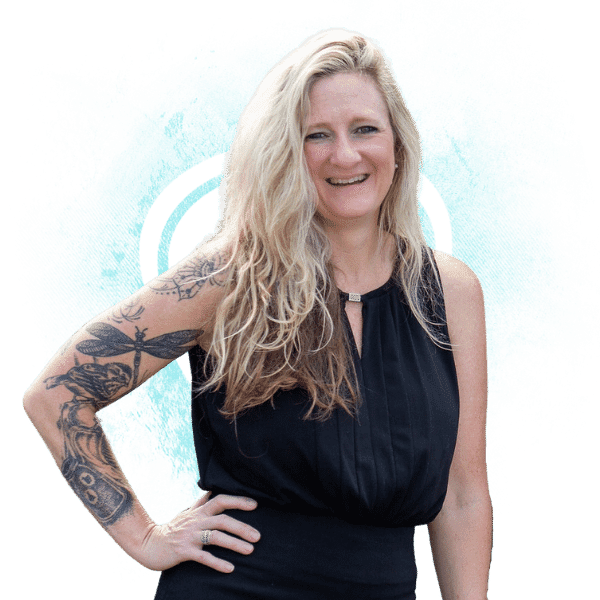
Do you identify with the Solo Act?
Take the full Owner Archetype Quiz to discover your founder style.
The Solo Act is not looking for sustainable growth—she is looking for sustainable space to live the lifestyle she wants while doing what she loves.
But the freedom that motivates her does have a downside.
When you are your business, how do you maximize your earning potential without work becoming your life?
The business tactics designed for big teams and larger businesses are not intended for solopreneurs. Instead, the Solo Act’s sustainability toolbox is all about systems that safeguard her autonomy.
Being a solo entrepreneur can be wonderful and draining at the same time.
On the one hand, you don’t have to answer to anyone but yourself (and your customers). You can pivot quickly to take advantage of opportunities that come your way. And cash flow management is pretty straightforward compared to other types of business owners.
But on the flip side, when all the things are yours to do, no one is there to catch whatever falls through the cracks.
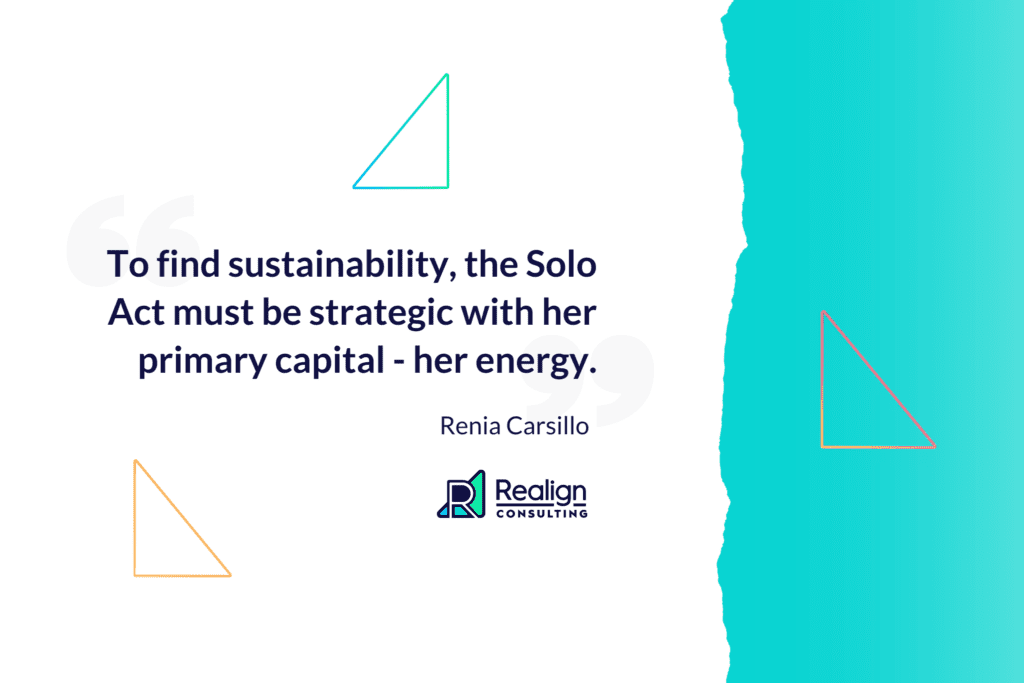
"To find sustainability, the Solo Act must be strategic with her primary capital - her energy."
Renia Carsillo Tweet
When your success depends solely on your efforts, it can be easy to keep moving and doing and creating until you burn out.
The perks of independence can be costly to maintain if you don’t have the right strategy and support. For a Solo Act to truly thrive, she must overcome two major challenges.
- Challenge #1: Avoiding overwhelm as a one-woman show by finding the right tools to support your goals
- Challenge #2: Generating enough income for your lifestyle without overworking or burning out.
A Solo Act's first challenge is managing everything needed to keep a business running while maintaining her autonomy.
Not all companies need an on-staff team working eight-hour days. If you’re a Solo Act, you know that’s just not your jam.
(And that may be why you started working for yourself in the first place!)
But even Ariana Grande has a stage crew and does regular collaborations.

Have you ever been so engrossed in what must be done at the moment that you’ve pushed vital tasks to the back burner until they become emergencies?
When you’re truly overwhelmed, it can feel like all you’re ever doing is putting out fires.
This is why systems and support tools are so vital for the Solo Act owner.
To find sustainability, the Solo Act must be strategic with her primary capital — her energy.
Most Solo Acts (and most types of business owners in general) make the mistake of trying to manage their time when they should be managing their energy.
The first step to reclaiming space for rest is to spend a week analyzing where you are spending your time.
What is eating up most of your time, and is it being spent on things that bring you joy?
What energy drain could feasibly be replaced by a system or contracted out to someone else?
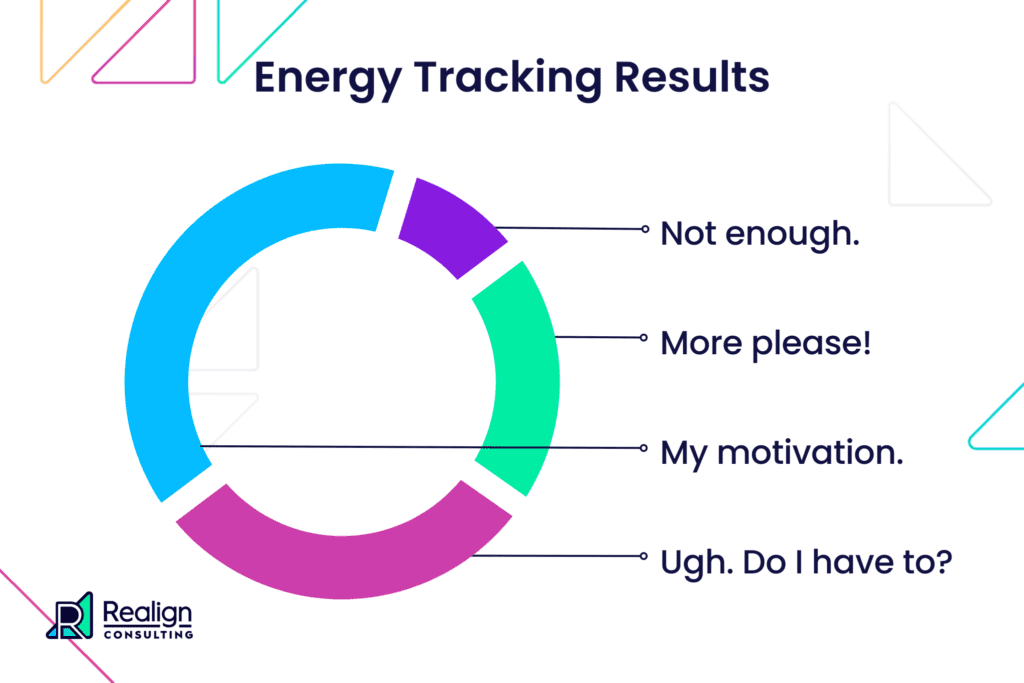
As a Solo Act, finding the right automations, contractors, and support networks to lighten your load is critical.
There is a world of DIY business tools you can use to get your time back and build ease into the way you work.
These include…
- Clockify Time Tracker to help you better understand where your time is going (consider tagging each task with the energy it required),
- Square, or a similar tool, to integrate booking and payment into one straightforward system,
- Calendly to reduce the constant flow of emails by automating your scheduling process,
- Workflowy to help you stay organized even when you have to do all the things,
- And so much more!
Plus, finding reliable contractors for specific projects and tasks can go a long way toward lifting the weight off your shoulders.
What areas of your business could you simplify with the right tools?
The Solo Act’s second challenge is developing products that bring in revenue without sacrificing time or hiring a team.
Are you mentally reliving those days of selling candy or t-shirts for your school fundraiser?
Don’t worry.
Any products a Solo Act develops should add value to the premium services she already offers.

This may include productizing some services to allow you to make an income while you’re doing other things.
It can also provide access points for clients who cannot necessarily afford your premium services. This way, they can benefit from what you offer.
An example of productizing services could be the owner of a local yoga studio who primarily does private training. She could also offer pre-recorded classes and even sell her artwork through the site. These lower cost point tools provide additional income and greater access to her work—all while maintaining and sustaining her lifestyle.
For many solopreneurs, being an affiliate for products and services you use and love is a great way to add additional income.
If you’re already making recommendations to your clients, why not seize the opportunity to supplement your income?
Productized services also attract new clients and support the Solo Act’s referral network.
When your clients rave about you to their friends and family, easy-to-access products and services can give them a lower-risk way to interact with your brand, build trust, and maybe turn into raving fans themselves.
What products can you offer to finance the space you are looking for in your business?
With some strategic reworking of her processes and systems, the Solo Act’s business can be just as sustainable as any other.
Next, let’s talk about the Crossover Sensation. Working with a trusted team is vital for this type of business owner to develop her wealth of ideas to their fullest potential.
The Crossover Sensation
Harnessing Your Creative Energy for Sustainable Business Growth
This type of owner seems to have a sixth sense about what people need or want to buy. And she doesn’t let a little thing like a niche slow her down—she’s got her hands in various business opportunities at any given time. Product launches are her lifeblood, and nothing excites her like discovering a new offering that her raving fans will love.
The Crossover Sensation may have a small and growing team, but they struggle to accomplish everything she wants to do. She spends more time on sales and the day-to-day than on doing what she loves—coming up with new ideas and directions for the company.
She wonders if that kind of flexibility even possible.
Does the Crossover Sensation resonate with you?
Take the full Owner Archetype Quiz to discover your archetype.

Founders who identify as the Crossover Sensation have an enviable amount of creative energy. But it takes the proper framework to bring out that energy’s true power.
When the only way you dream is big, your brand strategy must encompass how you show up in the world.
Polymathic local founders need a sustainable framework that allows innovation while supporting growth.
It’s not unusual for the Crossover Sensation to be told to focus on one thing and see it through. They can get the message that they expect too much—or maybe even that they are too much, especially when compared to other types of business owners.
But any attempt at imposing structure on this owner archetype tends to be met with resistance. Like throwing a blanket over a budding plant, limiting creativity can cause it to waste away.
At the same time, hopping continuously from one new idea to another does not lead to sustainability either.
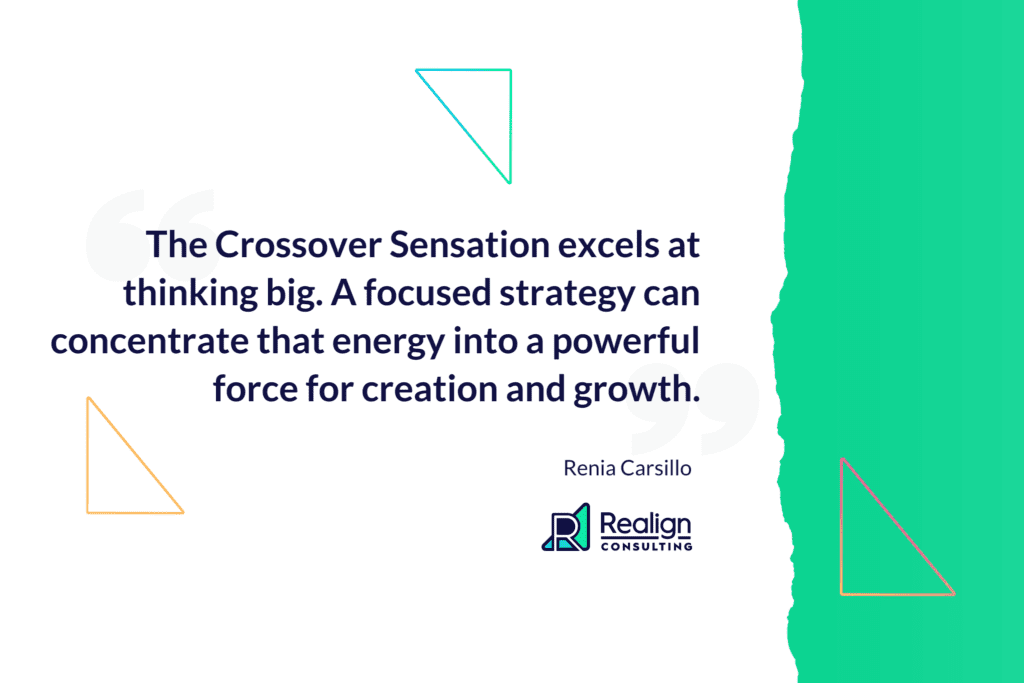
"The Crossover Sensation excels at thinking big. A focused strategy can concentrate that energy into a powerful force for creation and growth."
Renia Carsillo Tweet
For the Crossover Sensation to thrive, she needs a framework that creates consistency while leaving room for creativity.
Years ago, we transformed our backyard into a garden stocked with a smorgasbord of fruits and vegetables that thrive in the Florida climate. It’s been fun to discover all the ways we can use our little harvest, but nothing has been as versatile as our tomatoes.
You can purée or crush them, slice or dice them. They can be steamed, roasted, fried, baked—or even eaten raw.
(People can’t even decide if they are fruits or vegetables.)
But if you want to have the chance to enjoy a flavorful, juicy tomato, there are two vital steps you can’t miss.
First, the tomato plant has to be grown correctly, with a stabilizing structure that allows it to flourish.

If you’ve ever wondered, a tomato trellis has two purposes.
- It keeps the tomato plant away from pests.
- It encourages air circulation and access to sunlight.
The plant is able to thrive, while its natural wildness is never stifled.
The right kind of framework can help the Crossover Sensation reach her full potential as well.
The Crossover Sensation excels at thinking big. A focused strategy can concentrate that energy into a powerful force for creation and growth.
But first things first. As with tomato plants, you reap what you sow.
Planting zucchini and peppers in anticipation of a tasty bruschetta will leave you disappointed at the dinner table.
In the same way, the Crossover Sensation must learn to focus on bringing one or two seeds to maturity at a time to get the results she is looking for.
How do you know which seeds to plant?
The Crossover Sensation’s path to sustainability begins with this question: What most excites you about your work?
What is your favorite way to serve clients?
Is there any aspect of marketing that you love?
What kind of impact do you want to make in people’s lives?
Once you identify your driving passion, use it to focus your business strategy.
It is natural for the Crossover Sensation to get distracted by her innate ability to anticipate the needs and desires of those around her. But she will find greater satisfaction by using her expertise to focus on the people she can serve best, right now.
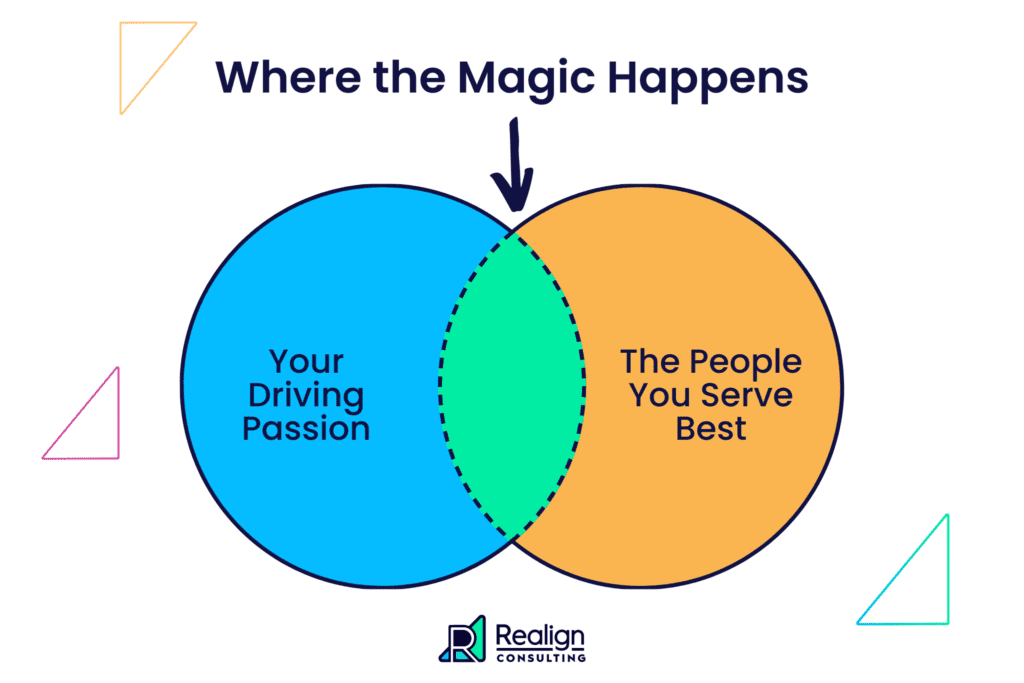
The key is to begin with some careful pruning. Use your creative spark in service to one or two products first, and bring them to maturity. Then you can focus on new offshoots from a place of stability and sustainability.
By containing your various projects under an overarching vision, you can more easily see what each project needs to shine.
This could look like an owner who is motivated to use her skill as an electrical contractor to keep buildings safe for their inhabitants. She could easily end up dividing her energy (and her team’s energy) between new construction and residential and commercial work.
If she were a client of Realign Consulting, we would recommend focusing on one of those services until she reaches a pre-determined benchmark.
That is not to say that this Crossover Sensation’s creative energy should be suppressed.
Rather, she needs to exercise her visionary talent inside a disciplined number of products or services to help them establish deep roots.
Then, new projects can branch off from a healthy foundation that mitigates the risk of trying something new.
A defining product strategy not only gives your company focus—it also gives your audience focus and makes your brand more marketable.
For the Crossover Sensation to find sustainable success, her customers need a centralizing message. This gives them something easy to share with their family and friends when they’re raving about how she has impacted their lives.
At the end of the day, what impact are you looking to make in your community?
Once you’ve identified that and learned to work with your strengths instead of against them, your impact can be exponential.
Finally, let’s talk about the Jukebox Hero. This type of business owner has built a legacy that others are still striving to achieve. And those hard-won skills are still applicable today—with a few tweaks.
The Jukebox Hero
Thriving as a Legacy Company Without Betraying Your Beginnings
I believe all types of local business owners are vital to a community’s growth and resilience.
(Specifically, small businesses with less than 50 employees.)
Those that have been around for 10, 15, or even 20+ years deserve to be celebrated on the front page of their local paper every damn day for the things they’ve likely endured.
When a community-based business goes the distance, it’s about more than just hard work. Their longevity speaks to the value they’ve brought to their community.
I categorize these local owners as Jukebox Heroes.
The Jukebox Hero owner archetype has been around the block and then some. But she’s not quite sure how to adapt her skill set to reach today’s customers.
There are employees on her team she has worked with for years. She’s been a pillar of the community, and people hear about her company in the newspaper, postcard mailers, local television ads, and flyers on community bulletins.
Recently, she’s noticed that her tried-and-true methods for pulling in customers aren’t working like they used to. She’s had to tighten the budget and maybe even let some people go. She’s thought about using updated tools like her website but isn’t quite sure what to do with it.
She wants to get back to the glory days of business growth. Right now, it feels like they’re going backward.
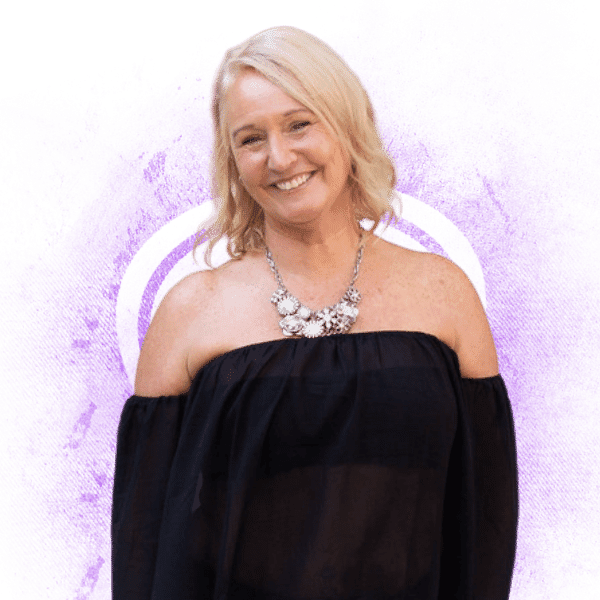
Does the Jukebox Hero sound familiar?
Take the full Owner Archetype Quiz to identify your archetype.
With some updates and reinforcements that honor what got them here, Jukebox Hero companies can be around for many years to come.
Unfortunately, many of these established businesses face stagnation as they struggle to navigate the changing market. This is bad news for local economies.
Fortunately, there are steps these founders can take to get back on track. They can still grow sustainably and continue to impact their communities.
To thrive, they will need to leverage their considerable experiences and strengths in strategic ways.
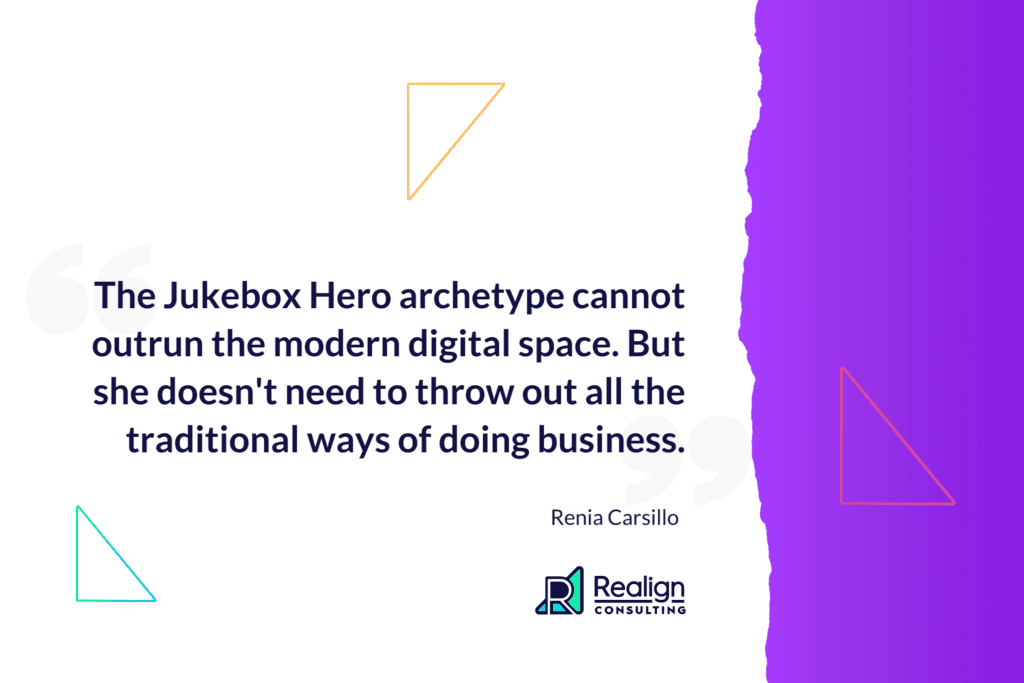
"The Jukebox Hero archetype cannot outrun the modern digital space. But she doesn't need to throw out all the traditional ways of doing business."
Renia Carsillo Tweet
The concepts that these legacy companies used in the past can help these types of business owners move forward by applying them to today’s digital world.
In the years I’ve worked with local founders, I’ve seen the Jukebox Heroes go from generating business primarily through word-of-mouth to struggling to reach a changing audience.
The quality of service hasn’t changed.
These owners excel at community engagement, long-term customer relationships, and brand development. But they often don’t know how to apply their substantial knowledge to the digital space.
They may have been burned by horrible or misguided digital marketing advice. So they may not see the need for these new tools and strategies.
But it is only getting easier to do things like book appointments online and interact with brands before walking into the building.
So these types of companies that are not adapting to digital tools are getting left behind.
The real estate industry is a prime example of this shift and its impact on local businesses.

It used to be a given that if you were looking to buy a home, one of your first steps was to go to your local real estate office and find an agent to work with. Then you would spend hours visiting home after home, narrowing down your choices, until you found a house that fit your criteria.
Today’s digital tools have cut that time in half and changed customer expectations.
Potential home buyers can search for their dream home from the comfort of their living rooms. And tools like email, e-faxes, and e-signatures have streamlined the home-buying process.
The realtor sitting in her office waiting for walk-ins and not incorporating this new technology (and new marketing strategies) will encounter a dwindling customer base.
To be clear, the established local founder’s business experience is still very relevant. It can even give them an advantage. But the strategy for applying this knowledge has changed.
The Jukebox Hero owner archetype has hard-earned business savvy. She’s formed deep connections with customers and partners. Her community knows her company can be trusted to deliver high-quality, professional products and services.
As a fixture in her community, the Jukebox Hero stands on a solid foundation.
But even homes with the most durable foundations need updates to keep their inhabitants safe and comfortable.
The Jukebox Hero owner archetype cannot outrun the modern digital space. But she doesn’t need to throw out all the traditional ways of doing business.
When a company with a legacy foundation integrates digital mediums with its core strengths, it’s as infectious and sustainable as hitting repeat on your favorite Beatles song.
The Jukebox Hero did not find success by accident.
When I’ve worked with these types of business owners to develop a sustainable business strategy, I always advise them to complete a SWOT analysis with their teams.
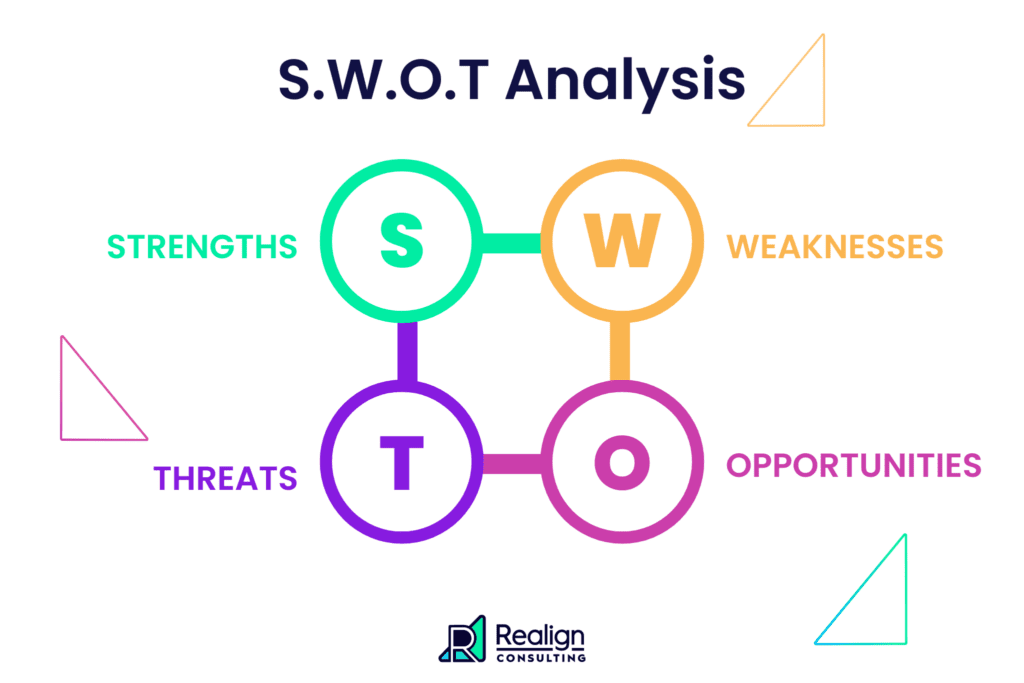
The first step in a SWOT analysis is critical.
We start with identifying what makes the company strong so it can find direction for the future.
I might ask them questions like…
- What do customers say they love most about your business?
- How do you stand out from other companies in your industry?
- What products or services are the most popular with your audience?
Some legacy companies may have tried to incorporate digital tools in the past. But a digital strategy has nothing to stand on without a deep understanding of what has made their brand work in traditional spaces.
It is important to have a third party facilitate the analysis, for these types of business owners in particular.
When a company has been in business for a while, it can be hard to have an unbiased opinion about what is working and what is not.
In my experience, the owner will identify the company’s strengths as those things she spends the most energy on. But an impartial perspective could reveal something different.
The second step of the SWOT analysis is to determine what the company needs to let go of from the past that is holding them back.
These questions may look like…
- What strategies, products, or tools are you clinging to that no longer serve the company?
- What do your competitors offer that you have not adopted yet?
Again, an impartial third party can be invaluable here. They can help the team avoid recreating patterns of behavior that have not worked in the past.
And finally, we discuss opportunities and potential challenges the company faces with its current environment and resources.
An outside observer can help the founder and her team understand how the local landscape has evolved over the years. They can also help identify new opportunities.
We consider questions like…
- Does your customer prefer to learn about your services online before talking to a person?
- Does your customer respond to text alerts rather than phone calls for appointment reminders?
- Does your customer do a Google search when looking for contractors in your industry?
The answers to these questions can help established businesses understand their next steps to growing with sustainability and ease.
This owner archetype has a wealth of knowledge that is enviable among other types of business owners.
She just needs to combine what she has learned about establishing deep connections with her customer base and apply it to the digital world. Then she’ll be on the path toward sustainability.

The Jukebox Hero owner archetype needs to understand the past to strategically move into the future.
Not all business support and strategies are created equal. What works for one owner may not work for another.
Honoring and moving on from past successes and failures is critical here. We don’t forget where we came from, and we don’t live in the past.
Once a local founder understands her business-generating superpower as a Jukebox Hero, the next step is clear:
Embrace the possibilities of today’s technology, letting it enhance—not replace—the core of what made you successful in the first place.
Which of the 5 types of business owners are you?
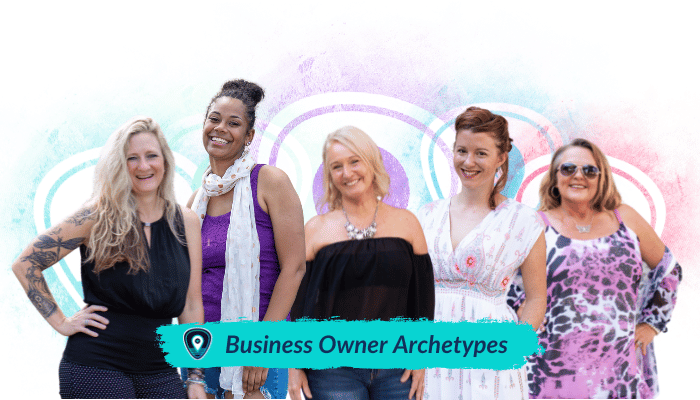
If you’re still not sure, take the quiz to identify your brand archetype.
Over the past decade of working with local founders, I’ve seen the change that occurs when they finally understand their unique approach to business.
- Our Fully-Booked Cover Band client has continued to grow his business, even surpassing his long-term goals. And because our strategy fits his ownership style, he has more room to live his life on his terms. He can rest easy knowing that his company will continue to succeed without his constant presence.
- Our Crossover Sensation client has also been able to take time away. And she can do so from a place of joy and excitement, anticipating the next project that will get her creative juices flowing. As a more fulfilled owner, she can more fully appreciate the impact her company continues to make in her community.
When you know the type of business owner you are, you can look at everything on your plate and confidently choose what is for you and what is not.
This turning point can lead to a more sustainable business and help you and your company thrive.
All types of business owners have the potential to become Local Rockstars — the default for their industry in their community.
So whether you are an Indie Artist, Jukebox Hero, Crossover Sensation, Solo Act, or Fully-Booked Cover Band, you can become a household name.
And with the right tools to support your personal ownership style, you can reach Local Rockstar status with sustainability and joy.
It's time to jump off the hamster-wheel and find the ease you've been looking for.

When you understand your innate business approach, you can find the support you need to move forward with clarity and confidence.
Each type of local founder brings something special to the table. Take the Owner Archetype Quiz to learn about your leadership strengths and what next steps are right for you.

